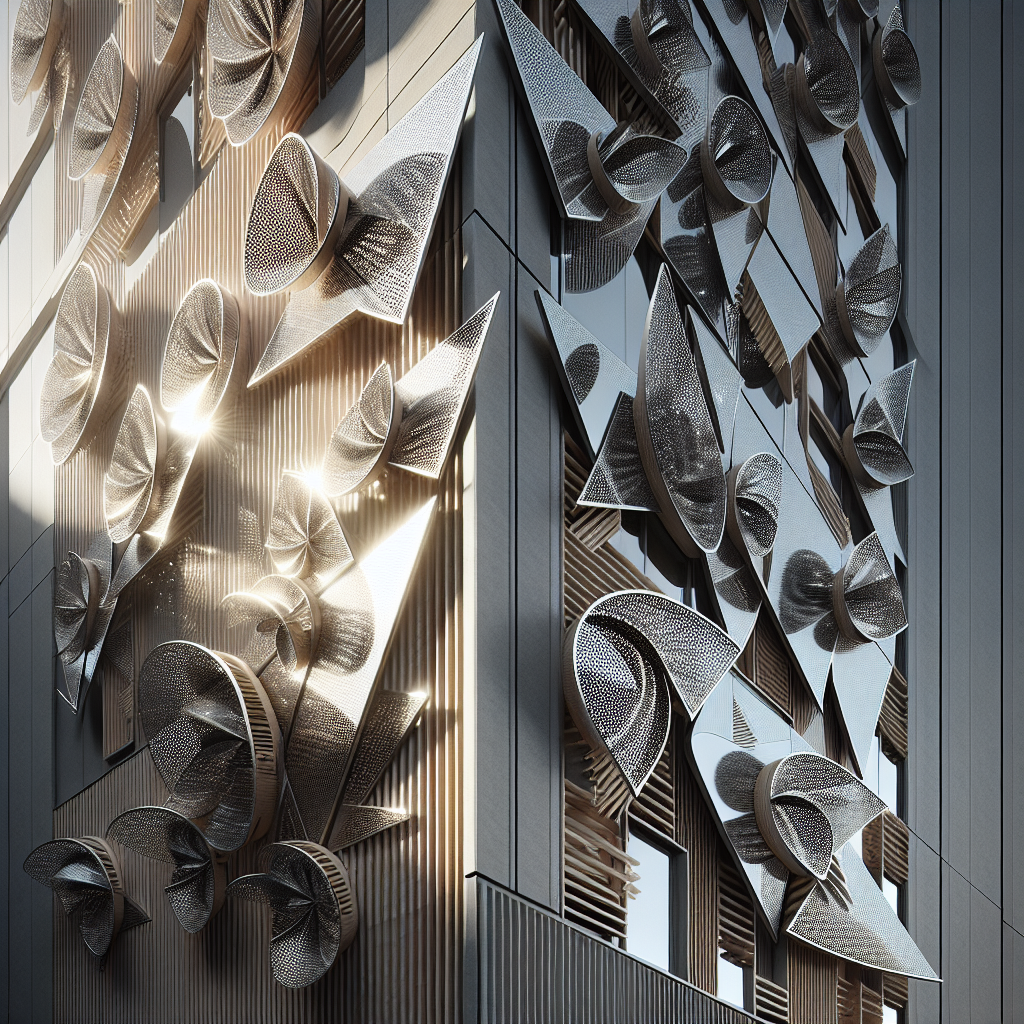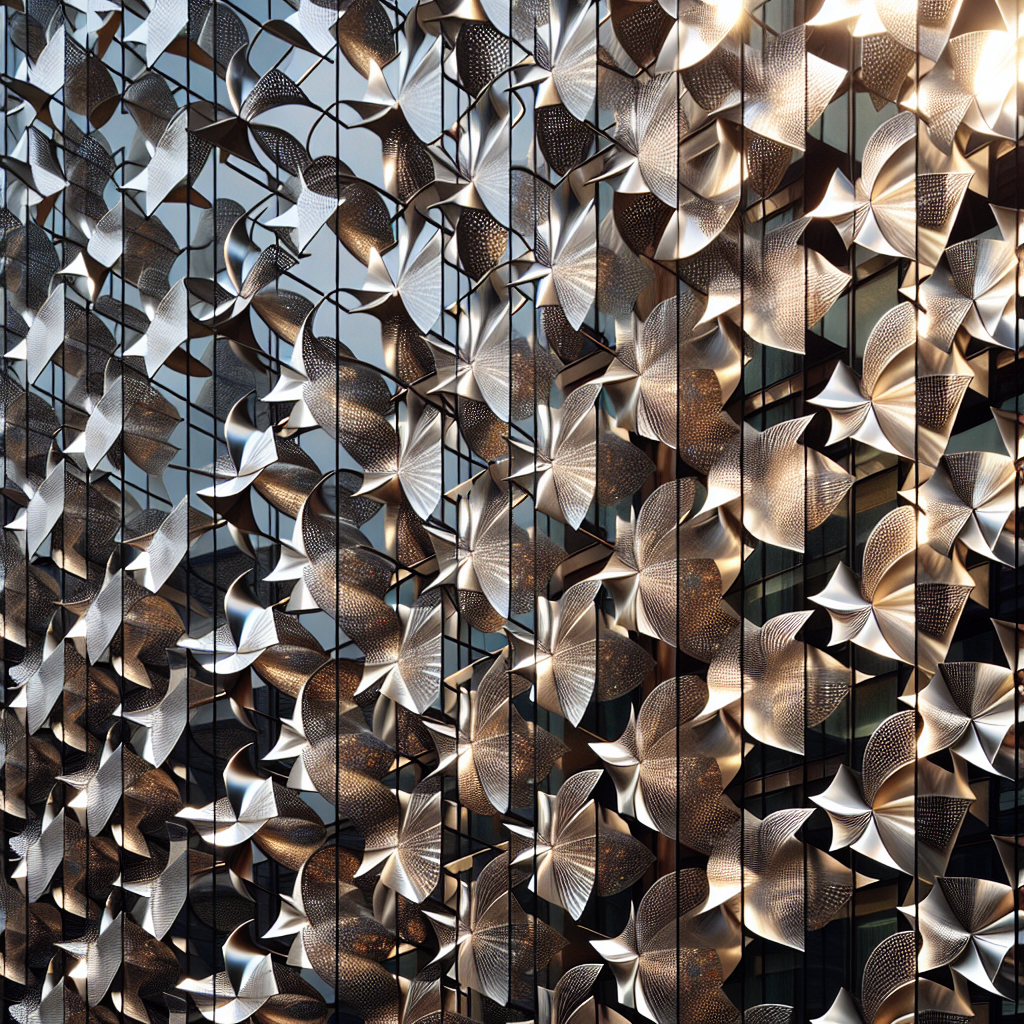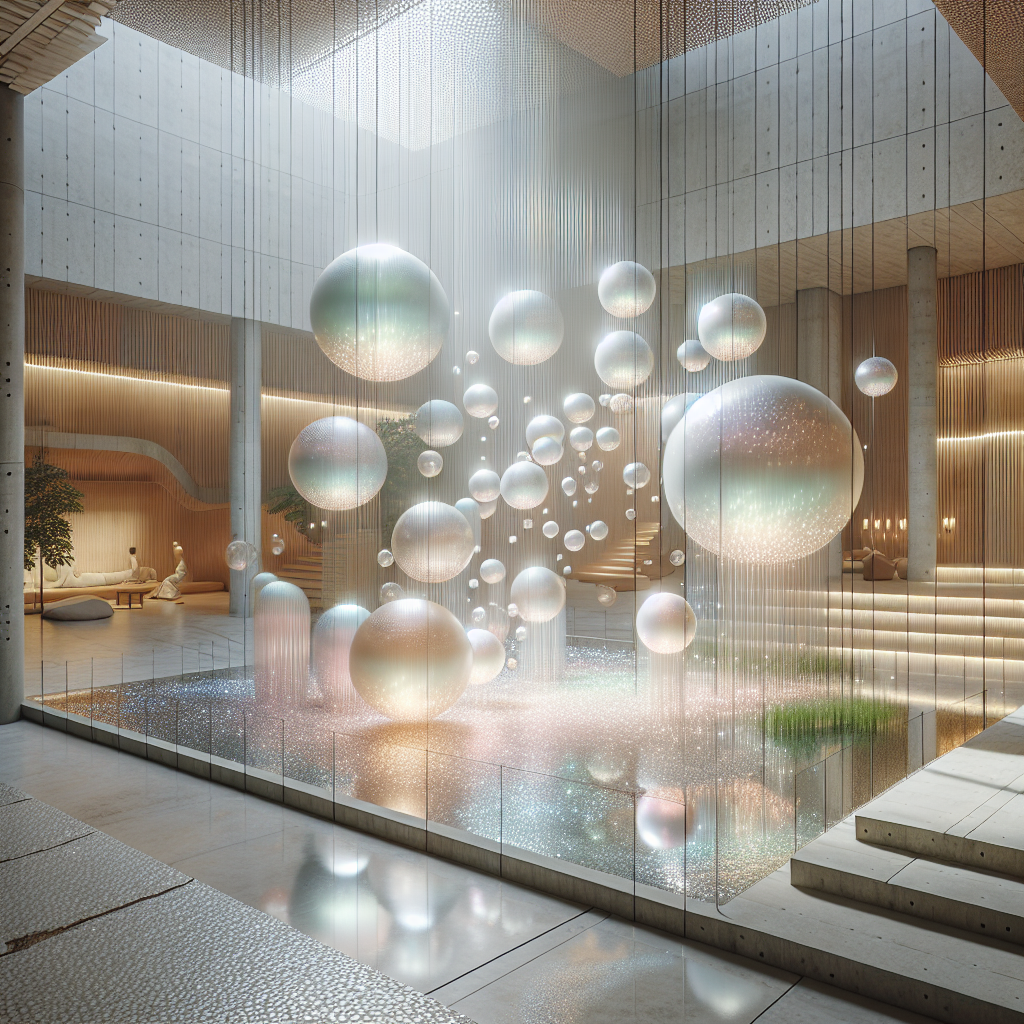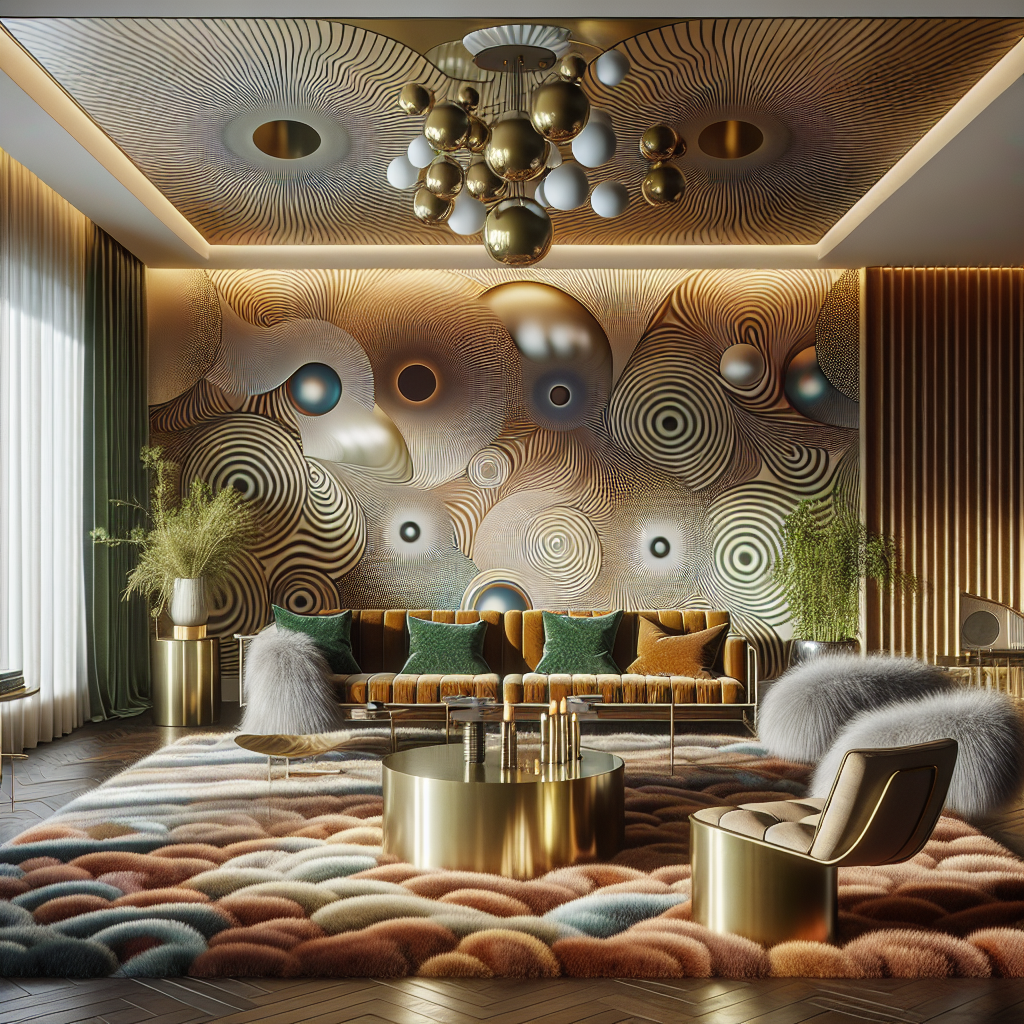Kinetic architectural ornaments: wind-powered rotating elements on facades
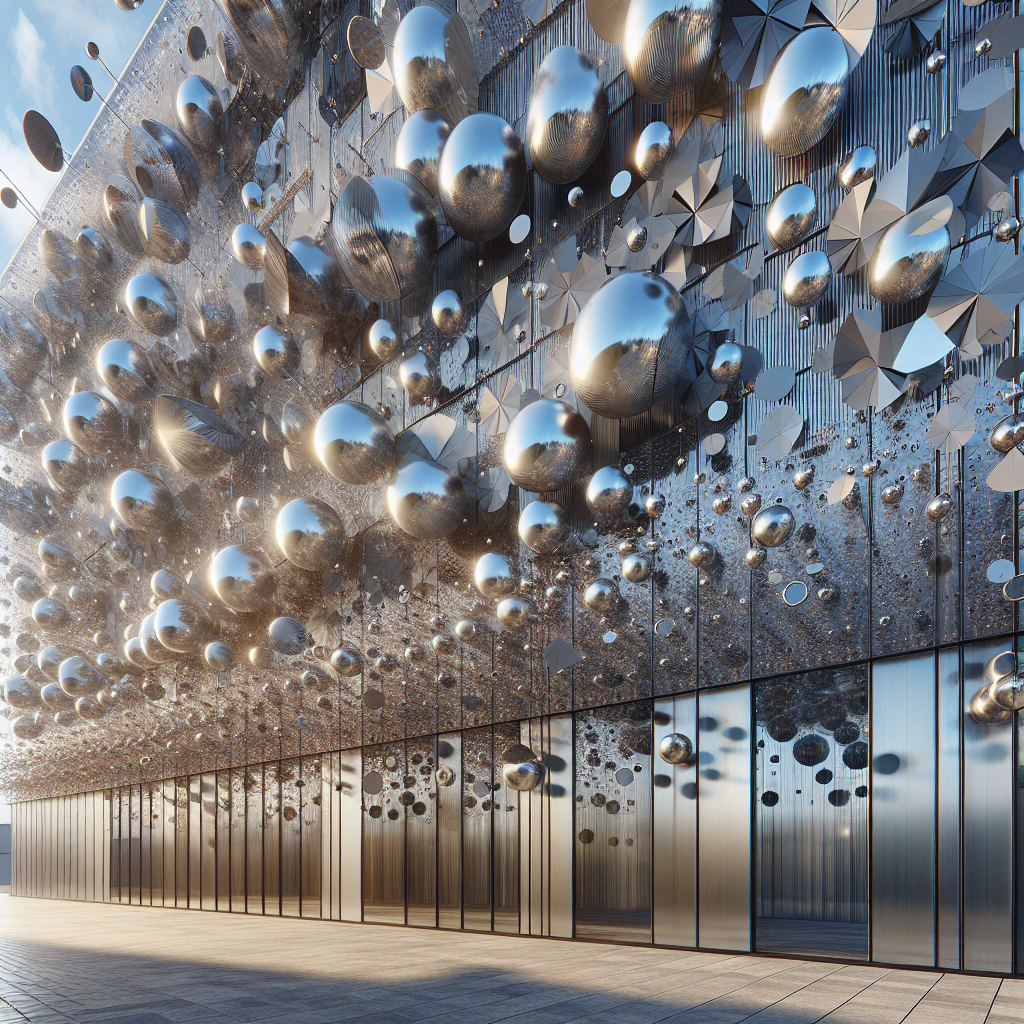
Kinetic Architectural Ornaments: Harnessing Wind-Powered Rotating Elements on Facades
In an era where architectural expression seeks harmony with environmental responsiveness, kinetic architectural ornaments have emerged as a captivating fusion of aesthetics, sustainability, and functionality. These wind-powered rotating elements, adorning building facades worldwide, are not merely decorative—they represent a dynamic dialogue between built environments and natural forces. Architects and designers, driven by a quest for innovation and sustainability, are increasingly embracing kinetic ornaments as integral components of contemporary design. This article explores the transformative potential of kinetic architectural ornaments, delving into their aesthetic appeal, environmental benefits, and groundbreaking examples from around the globe.
The Rise of Kinetic Architecture: Movement as Expression
Kinetic architecture, defined by structures or components that move or adapt in response to environmental stimuli, has its roots in the visionary works of pioneers like Buckminster Fuller and Santiago Calatrava. However, recent advancements in technology and material science have propelled kinetic design into the mainstream, making it accessible and appealing to contemporary architects and designers. Wind-powered rotating elements on facades, in particular, exemplify this trend, combining mechanical ingenuity with artistic expression.
These rotating ornaments harness the natural power of wind, transforming building exteriors into ever-changing canvases of motion and reflection. Their rhythmic movements create mesmerizing visual effects, altering perceptions of space and form throughout the day. Beyond their aesthetic charm, kinetic ornaments offer practical benefits, including passive cooling, shading, and energy generation, aligning seamlessly with the principles of sustainable architecture.
Aesthetic Dynamism: Sculpting Facades with Motion
One of the most compelling aspects of kinetic architectural ornaments is their ability to imbue static structures with a sense of life and dynamism. As wind interacts with these elements, facades come alive, their surfaces shifting and shimmering in a perpetual dance. Designers often employ reflective materials such as polished aluminum, stainless steel, or glass, enhancing the visual impact through captivating plays of light and shadow.
A striking example is the Al Bahr Towers in Abu Dhabi, designed by Aedas Architects. The building’s facade features an innovative system of triangular panels that open and close in response to sunlight and wind, creating a dynamic pattern reminiscent of traditional Islamic mashrabiya screens. This responsive design not only provides visual intrigue but also significantly reduces solar heat gain, exemplifying the harmonious blend of aesthetics and functionality inherent in kinetic ornaments.
Sustainability in Motion: Environmental Benefits of Kinetic Ornaments
Incorporating kinetic elements into architectural facades aligns closely with contemporary sustainability goals. Wind-powered rotating ornaments can contribute to passive cooling and ventilation, reducing reliance on mechanical systems and lowering energy consumption. Additionally, these dynamic components can integrate renewable energy technologies, such as small-scale wind turbines, generating clean energy directly from facade movements.
The Wind Arbor installation at the Marina Bay Sands Hotel in Singapore, designed by artist Ned Kahn, exemplifies this sustainable potential. Comprising thousands of hinged aluminum panels, the facade moves gracefully with the wind, creating mesmerizing patterns while simultaneously providing natural ventilation and shading. Such designs not only enhance building performance but also foster deeper connections between occupants and their natural surroundings, promoting well-being through biophilic design principles. For further insights into biophilic design, explore our detailed analysis on Biophilic Design and Its Impact on Human Health and Well-being.
Innovative Materials and Technologies: Pushing Boundaries
Advancements in materials and digital fabrication techniques have significantly expanded the possibilities for kinetic architectural ornaments. Lightweight, durable materials such as carbon fiber composites, 3D-printed polymers, and CNC-milled metals enable intricate, precise designs previously unattainable. Furthermore, computational design tools and parametric modeling allow architects to simulate wind interactions and optimize ornament performance, ensuring both aesthetic appeal and functional efficiency.
For instance, the dynamic facade of the Brisbane Airport Domestic Terminal in Australia, designed by Urban Art Projects, utilizes computational modeling to create an array of wind-responsive aluminum panels. These panels, intricately patterned and precisely engineered, rotate gently with the breeze, offering travelers an ever-changing visual experience while reducing solar heat gain and glare.
Emerging technologies like sand printing also promise exciting possibilities for kinetic architecture. As detailed in our exploration of The Potential of Sand Printing Technology for Design and Architecture, these innovations could further revolutionize facade design, enabling sustainable, site-specific kinetic elements crafted from locally sourced materials.
Case Study: The Council House 2 in Melbourne
The Council House 2 (CH2) in Melbourne, Australia, stands as a pioneering example of kinetic architectural ornamentation integrated with sustainable design principles. Designed by Mick Pearce in collaboration with DesignInc, CH2 features a facade adorned with wind-powered rotating timber louvers. These louvers adjust automatically, responding to wind speed and direction, providing optimal shading and ventilation throughout the day.
The timber louvers, crafted from sustainably harvested wood, lend warmth and texture to the building’s exterior, contrasting beautifully with the surrounding urban landscape. This innovative approach not only enhances the building’s energy efficiency but also demonstrates the aesthetic versatility and environmental potential of kinetic architectural ornaments. For more insights into timber’s role in contemporary architecture, read our feature on Wooden Skyscrapers: The Rise of Timber in High-Rise Construction.
The Future of Kinetic Architectural Ornaments
As cities grapple with the challenges of climate change and urbanization, kinetic architectural ornaments offer compelling solutions that merge beauty, functionality, and sustainability. The integration of wind-powered rotating elements into facades represents a significant step toward responsive, adaptive architecture capable of harmonizing with natural forces rather than resisting them.
Looking ahead, the proliferation of kinetic ornaments will likely be driven by continued advancements in materials science, digital fabrication, and computational design. Architects and designers will increasingly leverage these innovations to create facades that not only captivate visually but also actively contribute to building performance and occupant well-being.
Moreover, the rise of smart home technology and automation, as explored in our article on Smart Home Technology: Revolutionizing Home Automation, could further enhance the capabilities of kinetic ornaments, enabling seamless integration with building management systems and real-time responsiveness to environmental conditions.
Embracing Movement: A New Architectural Paradigm
Kinetic architectural ornaments, powered by the timeless force of wind, represent a bold departure from static, inert facades toward dynamic, responsive surfaces that engage with their surroundings. As exemplified by groundbreaking projects worldwide, these rotating elements offer architects and designers an extraordinary opportunity to redefine architectural expression, sustainability, and occupant experience.
By embracing movement as an integral component of design, kinetic ornaments challenge traditional notions of architecture, inviting us to envision buildings not as passive structures but as living, breathing entities in constant dialogue with nature. In doing so, they illuminate a path toward a more sustainable, harmonious, and inspiring built environment.
